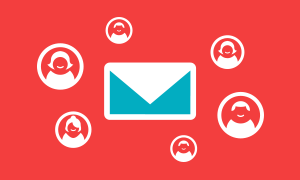How to Calm Skittish ISPs and Make Sure Emails Are Delivered
Published on March 04, 2015/Last edited on March 04, 2015/3 min read


Todd Grennan
Content Production Principal, Content Marketing at BrazeSavvy marketers know that their mobile outreach isn’t complete without a robust email strategy as part of their multi-channel messaging. Email has been an important element of the marketer’s toolkit for a long time now, but the rise of mobile has given it a new intimacy – with more than 50% of emails opened on mobile, you can reach users anywhere, anytime. But that’s only if your emails actually get delivered. Sending to a high volume of people increases the chances that ISPs will block your messages, significantly limiting the number of users who will receive your outreach. Luckily, Appboy’s Marketing Automation for Apps platform can help calm skeptical ISPs and ensure that your users get every email every time.
When you send out an email campaign to a large base of users, it’s likely that some of them will respond by labeling your email as spam. But if too many of them do that in too short a period, ISPs will assume you’re intentionally sending spam and will downgrade your reputation as an email sender, automatically flagging your messages and making it hard to reach your users.

To avoid that grim scenario, one client recently took advantage of Appboy’s segmentation and user limiting features to execute a strategy known as IP warming. By targeting highly engaged users in the early stages of the IP warming process and slowly increasing the number of emails they were sending, this client reversed a negative email reputation that had severely constrained its ability to send email and subsequently launched one of its most successful email campaigns.
While the process has since been automated to make it easier for our clients, if you’re looking into IP warming on your own, here’s how to proceed:
Using segmentation capabilities like Appboy’s, marketers should isolate the subset of their users who are most likely to open and engage with an email campaign, and then target them for a small-scale test run. When those users respond positively and don’t flag the email they receive as spam, that bolsters the email reputation associated with the sender’s IP address and allows them to send additional emails without being automatically blocked.
As a general rule of thumb, that first mailing should be about 1/30th the size of the full-scale mailings you eventually want to send. Then, once the first part of the IP warming campaign shows positive results, marketers should increase the number of emails sent each day by 30% until they’re sending the full number of emails they intend to per day. A strong marketing automation platform like ours will allow you to automatically limit the number of users receiving a given email and easily adjust that number up or down as necessary with each successive mailing, making it simple to create and sustain an IP warming strategy with minimal effort. Once you’ve successfully warmed the IP address you’re sending from, make sure to maintain your high email reputation by sending at least one email each month; otherwise, you’ll probably have to start again from scratch. And if you’re sending emails to hundreds of thousands of users, you’ll need to schedule large campaigns every couple of weeks to maintain your reputation.
For more details on IP warming and other strategies that can help you make the most of email, check out Appboy Academy’s Email Best Practices guide.
Advice on IP re-warming from Braze Customer Success Manager Sal Marciano
Related Tags
Releated Content
View the Blog
Enterprise generative AI: Transforming data, decisions, and customer experiences

Team Braze

Omnichannel personalization: Delivering consistent, connected customer experiences

Team Braze

Are you AI-savvy enough to survive? A wake-up call for CMOs
